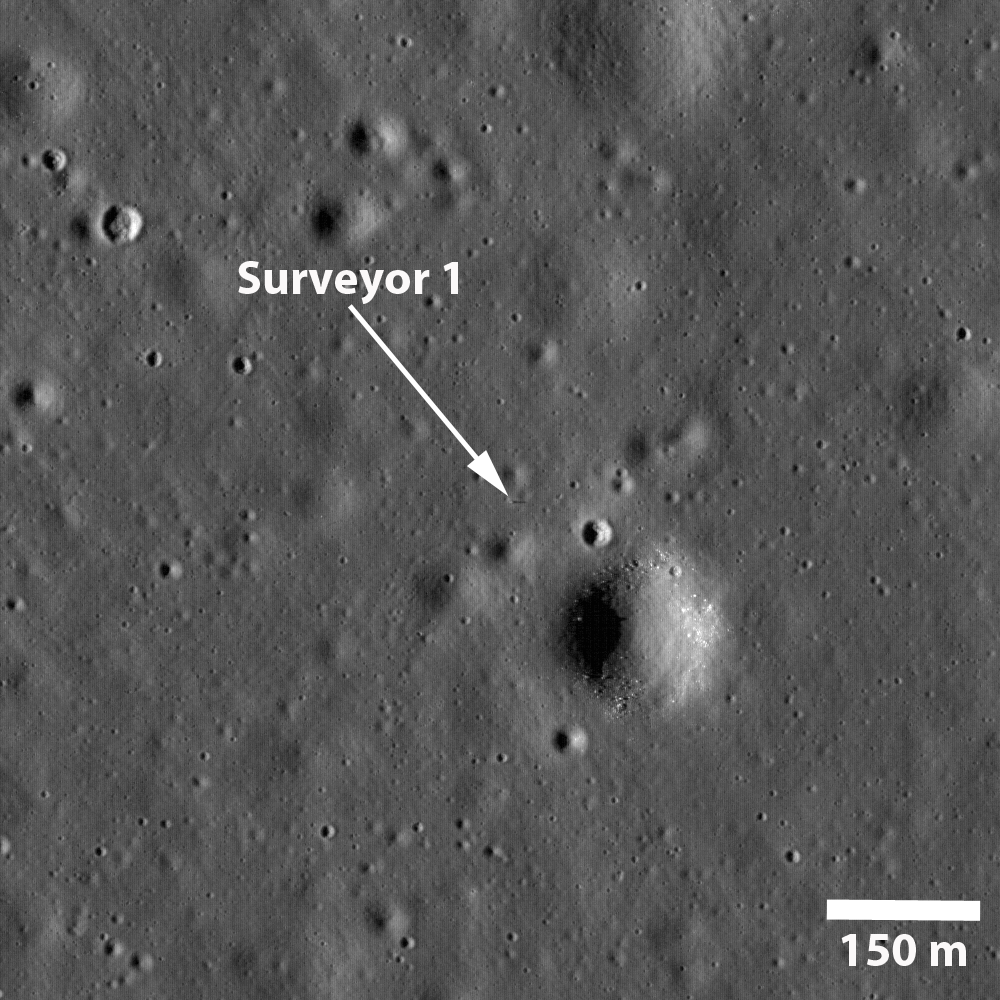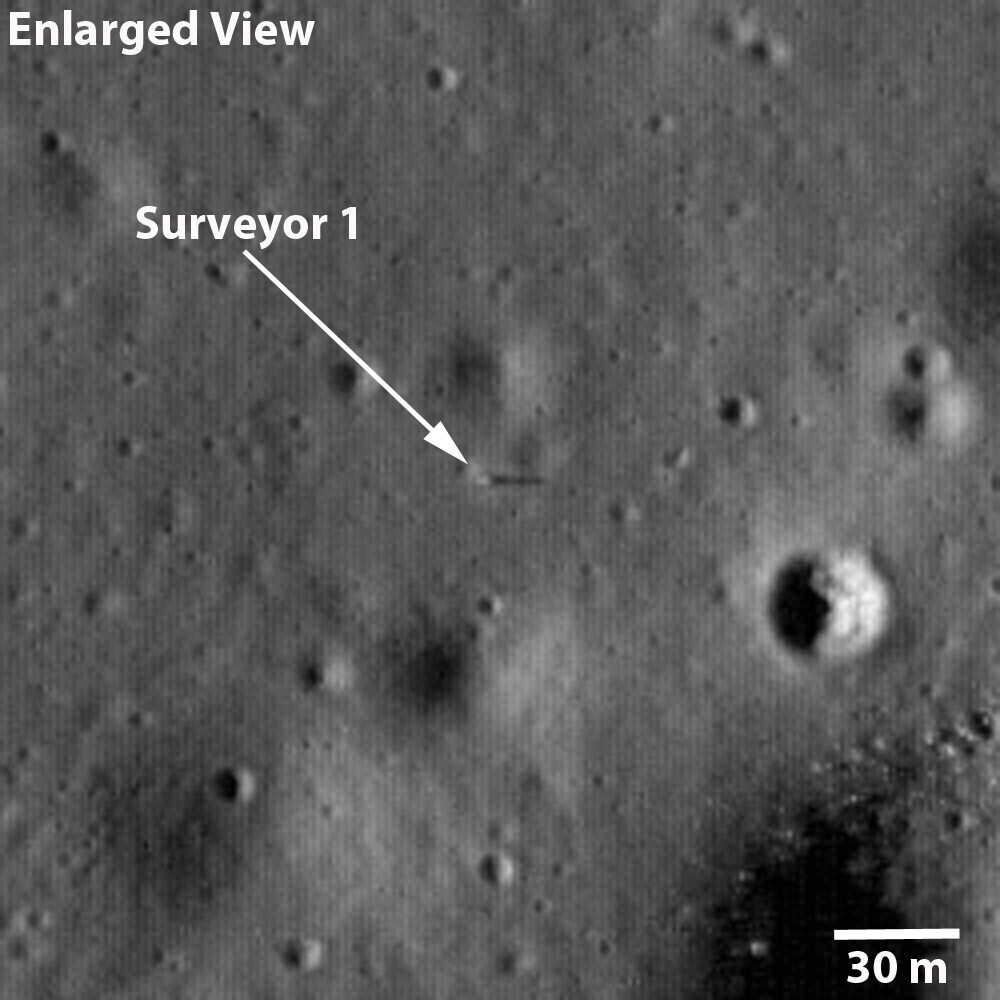
Surveyor 1 was the first in a series of seven US missions to the Moon that preceded Apollo; five of the seven missions were successful. Surveyor 1 was launched on May 30, 1966 and landed on June 2, 1966. The mission's objectives were to soft land on the Moon and to collect information on the lunar regolith. This first Surveyor spacecraft carried only a television camera system (later missions carried additional instruments). The spacecraft landed on a relatively smooth mare surface in Oceanus Procellarum (the Ocean of Storms). The Surveyor 1 landing site is also one of the areas identified by Project Constellation as a high-priority target for future human lunar exploration.
The scene shows the spacecraft (annotated with an arrow) just south of a subdued 40 m diameter crater and about 110 m northwest of a 190 m diameter crater lined with boulders. The landing site is in the northeast corner of the Flamsteed Ring, a 100 km diameter impact crater almost completely buried by mare lavas such that all that remains exposed is the upper part of the original crater rim.
Surveyor 1 collected over 11,000 images, most during the first lunar day between landing and July 7, 1966. The spacecraft continued to operate until January 7, 1967. The Surveyor images demonstrated that the lunar surface was strong enough to support a landed vehicle or a human. The detailed images also indicated that the surface was composed of a granular material interpreted to be produced by the impact of various size meteors over billions of years.
Explore the full-resolution NAC image of the Surveyor 1 site.
LROC Image of Surveyor 3 and Apollo 12.
LROC Image of Surveyor 5.
LROC Image of Surveyor 6.
Published by Jeff Plescia on 30 September 2009

